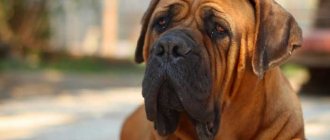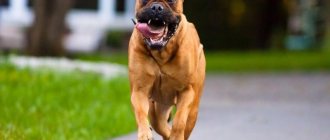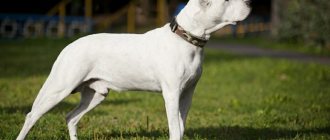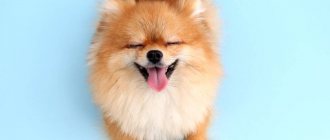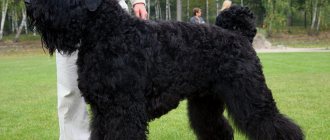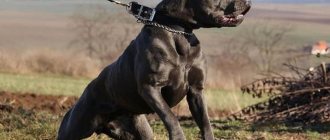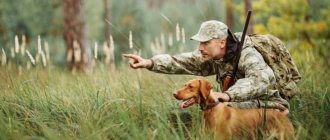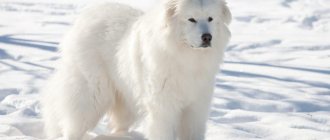Every dog lover has their own “type”. Whether you prefer big or small dogs, long-nosed or short-legged dogs, curly-haired dogs or wolf-like dogs, there is a breed for you. And if you're partial to dogs that look like bears, you're in luck! There are many dogs with thick fluffy fur and an external resemblance to a clubfoot.
Keep in mind that bear-like dogs are not suitable for everyone. With a few exceptions (we're talking about Spitz), these dogs look like bears in part because they are large, and in some cases very large, unlike Pomeranians, which look like teddy bears. So these pets may not be suitable for living in apartments or small houses.
Most shed heavily and require regular grooming to keep their coat clean and healthy. And almost all bear-like dogs were bred for cold climates, so they do not tolerate hot weather well and cannot be kept outside in high temperatures.
But if you think you're ready for a furry, bear-like pet in your home, check out the dog breeds below.
Pyrenean mountain dog
These heavily furred white dogs are gentle giants unless one of their pack is in danger. Bred in the Pyrenees Mountains, the range that separates France from Spain, Pyrenean Mountain Dogs are moderately active dogs that require a nice walk in the park and a cool place to rest.
Their coat is naturally resistant to dirt and tangles, but requires brushing once a week. A couple of times a year, Pyrenean Mountain Dogs will shed heavily, so have a powerful vacuum cleaner ready. These intelligent, affectionate dogs are great with children, but are not suitable for apartments or hot climates. Oh, and they like to bark —a lot of bark.
Choosing a puppy
Before you buy a puppy, you should check the documents of the Spitz's parents. Diplomas from the exhibition and pedigree can be viewed in the nursery. It is better to refrain from buying a puppy obtained from the first mating, because the dog could have inherited various defects.
Before purchasing a puppy, carefully check all accompanying documents
If the breeder cannot show the necessary documents for the sires, perhaps everything is not in order with the papers, such a puppy is not worth buying.
To buy a dog, you need to conclude a sales contract, which indicates the cost of the puppy. The purpose of purchasing a Spitz also affects the price, which means it’s worth writing about this in the contract. Documents that the breeder must have:
- Veterinary passport, which indicates the date of birth of the puppy, data on the owner. This document records the pet's vaccinations.
- Metrics for a puppy. It indicates the origin of the dog, color, gender of the puppy, as well as the number assigned to the animal. The cynological organization replaces the metric with the pedigree of the animal.
When the puppies run to look at the stranger, mark the bravest one. It is better to abandon a puppy that barks incessantly. A dog whose tail is between its legs is no longer a representative of the breed. Cowardice is a breed defect. An affectionate and active dog will be a great friend.
Pomeranian puppies
If the puppy meets all the criteria for a new owner, then all that remains is to examine the pet’s appearance. The tummy should not be bloated, the back should not sag. The paws should be level and straight.
Chow chow
Perhaps the Chow Chow is the most well-fed of the bear-like dogs. It is given volume by fluffy coarse fur and a luxurious mane of hair around its muzzle. Their resemblance to clubfoot is given by their round muzzle with a short nose and deep-set eyes. Their double coat of fur sheds heavily, so they need to be brushed several times a week.
Did you know that originally bred in China as hunting and guard dogs, Chow Chows are considered one of the oldest dog breeds.
The Chow Chow can be a little aloof and wary . To ensure your pet becomes a well-socialized adult dog, be sure to introduce it to children and other dogs as a puppy and teach it obedience. These furballs require a moderate amount of exercise, run very little, and can adapt to apartment life.
Content Rules
It is the fluffy fur that gives the dog its resemblance to a bear, and caring for it will be one of your main concerns. Thick fur is prone to tangles; to avoid this, it will need to be washed and combed regularly.
A few simple recommendations:
- Provide your dog with a balanced diet;
- Consult your veterinarian and select a multivitamin complex for your breed;
- Brush your pet’s teeth – this will protect against periodontal disease;
- Carry out deworming and routine vaccinations in a timely manner;
- Training should begin as early as 1-2 months;
- Clean your eyes with a damp swab daily.
Consider all the features of the breed you have noticed, weigh the pros and cons and make a choice. We hope you will find a common language with the chosen puppy and will enjoy each other for a very long time!
Pomeranian Spitz
Is any living thing more like a stuffed toy than a Pomeranian puppy? Although they didn't make our list of fox-like dogs, the furry little Pomeranian puppies definitely have a fox-like personality that only intensifies as they get older.
Generally sweet and friendly, Pomeranians love to play indoors with a ball or squeaky toy, but do not tolerate prolonged exercise outdoors in hot weather. Although they love children, their diminutive size - they weigh only two to three kilograms - means they may not be suitable for families with rambunctious children. And this luxurious fluffy double fur? He sheds a lot and needs to be brushed several times a week.
Breed standard
For all types of Spitz, there is one breed standard for the Dwarf German Spitz. The judges of the World Cynological Federation do not divide Pomeranians by type. By purchasing, the owner can make her a show career.
At dog shows, dogs are not divided by type.
For owners, going to the first exhibition is a holiday, because receiving a description of their dog from a famous expert and hearing praise from breed breeders is a great success. The expert in the ring will ask you to place the dog on a special table, where he will evaluate the following parameters:
- The body type of a Spitz should correspond to a 1:1 ratio. The length of the back is equal to the height at the withers.
- The head should be oblong, the muzzle should be narrow. Flat muzzle and domed skull are not allowed.
- The dog has a bite. An undershot is not allowed (the lower jaw protrudes and hides the upper jaw).
- The dog's height is 18 cm - 22 cm.
- Pet color. Spots are not allowed on dogs of the same color. On spotted animals, the spots are located symmetrically.
The most popular colors for bear-type Pomeranians are:
- black;
- white, cream;
- sable;
- brown.
Sable orange color
The expert will ask all participants in the ring to start moving with the dogs around the ring. When evaluating animals at a trot, the judge will ask them to lag behind or overtake their partners in the ring, placing them in prize places. During the entire time the dogs are at the show, the judge evaluates the character and demeanor of those in the ring. Cowardice, loud barking, and aggression are considered disqualifying vices. The owners receive the final decision on who the winner of the ring is and a description of their pet after all the rings have ended, at the awards ceremony.
Newfoundland
If you notice a bear that likes to spend time in the water and constantly sticks its tongue out, it may not be a bear at all. It could be a Newfoundland! Bred in the ice-covered Canadian province of Newfoundland and Labrador as marine working dogs, these large dogs became famous for their fearlessness in rescuing drowning people.
Fun fact: Newfoundlands are one of the best mountain dog breeds that love adventure and water fun!
Today's Newfoundlands are known for their sweet dispositions and love of children. However, these wonderful companion dogs can literally outweigh their owners! This giant breed of dog requires plenty of space to live, plenty of people or animals to socialize and play with, moderate exercise, and owners who tolerate shedding and excessive drooling.
Diseases
Here are some health problems that are common in Pomeranians:
- Injuries. One of the main causes of death of all individuals. Injuries may include: an accidental fall, being hit by a car or in an accident, trachea being crushed by a leash, and so on.
- Gastrointestinal problems. These include: constipation, inflammatory bowel disease (enterocolitis), pancreatitis, lymphangiectasia (dilation of the lymphatic vessels that are located in the submucosal and mucous layers of the wall of the small intestine), exocrine pancreatic insufficiency, and so on.
- Infections. Problems of this type include: fungal infections, viral diseases (distemper and parvovirus), bacterial infections (such as leptospirosis) and protozoal diseases (such as leishmaniasis and babesiosis).
- Allergy. It can appear under the influence of various factors: food, environment, medications, insects, and so on. If your pet develops symptoms such as sneezing, watery nose, red skin, and itching, contact your veterinarian.
- Separately, it is necessary to highlight the collapse of the trachea. The trachea, or breathing tube, is made up of rings of cartilage that make it look like the ribbed hose of a vacuum cleaner. This structure ensures its flexibility and strength. The cartilaginous rings of the breed are weak. The trachea can collapse and become too narrow due to external factors. This leads to coughing and difficulty breathing. Most cases of collapse are mild. They are treated with medications. When symptoms are severe, surgery is performed.
In any case, if you notice any changes in your dog's behavior or appearance, take him to the vet. Timely help will help cure and sometimes save your pet’s life.
Caucasian Shepherd Dog
The Caucasian Shepherd Dog, also known as the Russian Bear Dog , was bred to be a fierce and fearless protector of the herds in the Caucasus Mountains separating Europe from Asia. Although this powerful, giant breed probably no longer fends off attacks from bears or wolves, it still protects its home and cares for its family - to the point that it can be aggressive with strangers and other people's animals.
Since male Caucasian Shepherds can tip the scales at up to 100 kg (!), early training and socialization are a must. Unlike lap dogs, this is not a breed for beginners . Its double coat sheds heavily, so the pet will have to be brushed several times a week.
Breeding
A litter usually produces several puppies - from one to three. Breeders try to find parents by weight. It is necessary that the female weighs about 2.5 kg, and the male – 2-2.2 kg.
If the “lady” behaves aggressively towards the “knight”, then she is not yet ready for mating.
The fertilization period is individual for each animal, but usually the optimal moment occurs on days 11-13 of estrus. If everything went well, then on the 58-63rd day the babies are born.
The puppy weighs 55-125 grams at birth. Children are not removed from their nursing mother until they are two months old. They gain up to 10 grams of weight per day if well cared for.
Samoyed
Cute, cheerful Samoyeds were bred in Siberia and northern Asia to withstand some of the coldest temperatures on the planet. Today, these “polar bears” thrive in an air-conditioned home during the summer months.
IMPORTANT! Samoyeds love their family and do not do well if left alone for long periods of time.
These white dogs' signature fluffy coat sheds almost all the time , so they require brushing several times a week. But one look at this cute, “smiling” face, and you will forgive her the extra work.
Poodle
Boundless energy and a sunny disposition make the Poodle an excellent family dog. No breed has a more developed sense of humor than the poodle.
Poodle puppies, especially the chocolate ones, look like teddy bears. So you can't be sure which one is a poodle and which one is a toy. White, blue and peach poodles are also not uncommon. A dog's fur does not cause allergies, but requires regular care and maintenance. You will have to use not only shampoo, but also wool conditioner. From the age of six weeks you need to accustom your pet to combing. A poodle's haircut can highlight its beauty and grace.
Keeshond
If you are looking for a medium-sized bear dog that will be a loving companion and devoted family dog, the Keeshond fits the bill. These fluffy balls of gray, black and cream fur were bred as companion dogs for Dutch bargeeers, a role they still take seriously to this day.
Keeshonds enjoy spending time with their people and do not like to be left alone for long periods of time. They quickly adapt to apartment life, small children and other pets, and as long as you promise to adore and cuddle them, you will have a loving friend for life.
How long do Spitz live and what health problems do they have?
The life expectancy of a Pomeranian is from 12 to 18 years, and depends, first of all, on the quality of care for the Spitz, and on its size. As a rule, larger individuals live longer.
The tiny dimensions of the Pomeranian Spitz, unfortunately, often provoke the appearance of various diseases in the pet:
- Complications related to teeth. Baby teeth have long roots, which causes problems with their natural loss.
- Problems with the eyes, frequent tearing. Due to the special structure of the skull (a sharp transition from the forehead to the nose), the eyes of the Pomeranian bear cub are extremely sensitive and vulnerable, so even dust or heat outside makes the Pomeranian “cry”.
- Hypothyroidism. This is a hormonal disease that causes malfunction of the thyroid gland. The pet becomes lethargic, gains a lot of weight, itchy rashes (dermatitis) and baldness appear on the skin.
- Diseases of joints and bones. Bear-type Pomeranians are prone to frequent sprains and other injuries due to weak ligaments and thin bones.
- Epilepsy. Genetic pathology does not manifest itself immediately, but only when the pet is two years old.
Eurasier
Similar in size to the Keeshond, the Eurasier also shares some of its best qualities, including its bear-like appearance and desire to be close to its human family. Considered a purebred breed , the Eurasier was developed during the 1960s and 1970s when a German dog lover crossed a Chow Chow and a Wolfspitz. Today, Eurasiers are popular in European countries with colder climates, but are less known in other parts of the world.
These friendly fluffies have a double coat, like their immediate ancestors, and will shed their undercoat several times a year. So plan on brushing and vacuuming frequently! Take a look at these German dog breeds that will make great companions.
Distant history
Peat dogs are distant relatives of modern Spitz dogs. Their remains were discovered in an area of northern Europe. The remains found date back to the Stone Age. In the Middle Ages, the first descriptions and drawings of dogs appeared that looked very similar to modern Spitz dogs. These strong, brave animals were guards and sled dogs. They were used to move small loads. At that time, no one paid attention to appearance, so the dogs had different colors.
They were used to move small loads
In England and Germany, dog shows first began to be held in the 18th century. Rich, noble residents of European countries began to acquire and breed pets as decorative animals. The artificially created breed of dwarf Spitz was based on characteristics of miniature size. Large representatives of Spitz continued to be bred for performance characteristics, neglecting color.
The ancestors of the German Spitz with recognizable proportions and a fox face lived in the territory of modern Sweden. Their remains and images in the form of ornaments on utensils were discovered during excavations of ancient settlements. The first Spitz dogs were black in color. Archaeologists date the find to the 8-10th century BC. Written references to the Spitz were made in the 15th century; the dog is shown in them as a sociable and friendly dog. The German naturalist Fitzinger in 1867 wrote the characteristics of 48 species of Spitz. In his work, the dog is described as a friend and helper, protector and companion.
With the advent of the Internet, mini dogs that look like bear cubs have become especially popular. Through the efforts of modern breeders, it was possible to obtain puppies with the dwarfism gene. These animals have a flattened muzzle, and their plush fur makes Mini Spitz look like bear cubs.
Tibetan mastiff
Do you need a furry pet? Do you want a big dog that looks like a bear? We recommend the Tibetan Mastiff, a bear-like dog originally bred as a guard dog in the Himalayan highlands, but which is now just as happy to serve as a playful and protective family companion.
Tall and stocky but not giants, Tibetan Mastiffs have a thick double coat and bushy tail, but they shed surprisingly little . Brushing them several times a week will help keep their fur clean. You'll also want to check those furry paws for any accumulated dirt. And most importantly, keep this chubby little buddy indoors during the hottest part of the day.
Based on materials from: www.rd.com
Peculiarities
Large and medium-sized breeds are of ancient origin and are intended to be kept only in private houses with a plot. In childhood, they undoubtedly resemble teddy bears, but as they grow older, their appearance changes. Dimensions, the need for large space and a thick coat make it difficult to live in apartment conditions. But it is the warm fur, reminiscent of a bear skin, that provides comfort when the dog is on the street or in an unheated room on frosty days.
Large dogs show a desire for leadership, and therefore they require more strict training and constant training. Miniature breeds resemble clumsy, fluffy bear cubs, causing emotions of tenderness and admiration. They adapt perfectly to living in an apartment . They are excellent companions and make great family pets.
American Akita
<
Often called the "silent hunter", the Akita is a quiet but temperamental dog that can often be difficult to train. This is the largest breed of Japanese Spitz, which is distinguished by a sophisticated bear-like character with thick hair and rounded ears. As a high-energy breed that also tends to be very loyal, Akitas have long served as guard and hunting dogs and require daily exercise.
Leonberger
Leonbergers were originally bred to be majestic companions fit for royalty. Given their impressive size and strength, Leonbergers were renowned for their ability to pull carts. "style="display: block; margin: auto;"> Originally from Germany,
Leonbergers were originally bred to be majestic companions fit for royalty. Given their impressive size and strength, Leonbergers were renowned for their ability to pull carts. But despite their enormous height and thick fur that gives them a bear-like appearance, these dogs are gentle and serene by nature. However, they make excellent watchdogs.
